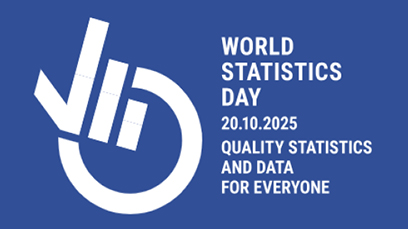
The 1st Session of the program shares views and information on the V4 + Japan automotive industry, with special focus on automated driving technology, while the 2nd Session introduces the collaboration via Joint call for proposals to enhance scientific cooperation on material science.
Date & Time: 9 March 2022, 8:30 - 13:00
Venue: Eötvös Loránd Research Network, Research Centre for Natural Sciences, „TTK“ building 1117 Budapest, Magyar tudósok körútja 2.
Hybrid - Zoom link (tba)
Language: English
Programme
The program aims: to introduce the multilevel collaboration of the V4 countries and Japan, from basic research to technological innovation.
The 1st Session shares views and information on the V4 + Japan automotive industry, with special focus on automated driving technology, while the 2nd Session introduces the collaboration via Joint call for proposals to enhance scientific cooperation on material science.
| 8:00 – 8:30 | Registration |
| 08:30 – 10:45 | Session I: Future of the automotive industry – Automated Driving Technology |
| 8:30 – 8:35 | Welcoming remarks |
| Mr. Márton Schőberl, Deputy State Secretary, Ministry of Foreign Affairs and Trade (on-site) |
|
| 8:35 – 8:40 | Opening remarks |
| H. E. Mr. Masato Otaka, Ambassador of Japan to Hungary (on-site) |
|
| 8:40 – 8:45 | Welcoming remarks |
| H. E. dr. Norbert Palanovics, Ambassador of Hungary to Japan (on-site) | |
| 1. Automated Driving Technology | |
| 8:45 – 9:00 | Japanese expert |
| A social implementation project for MaaS equipped with an autonomous driving system | |
| Mr. Toshio Yokoyama, Project Coordinator for the “RoAD to the L4”, National Institute of Advanced Industrial Science and Technology (AIST), Japan (online) |
|
| 9:00 – 9:10 | Hungarian expert |
| Introduction of ZalaZONE Park as industrial, research & development ecosystem | |
| Dr. András Háry, Managing Director of the ZalaZONE project company (on-site) |
|
| 9:10 – 9:25 | Slovak expert |
| Building an Intelligent ADAS and V2X research laboratory from scratch | |
| Mr. Marek Galinski, Assistant Professor, Faculty of Informatics and Information Technologies at Slovak University of Technology (on-site) | |
| 9:25 – 9:40 | Polish Expert |
| Human aspects of automated vehicles | |
| Mrs. Małgorzata Pełka and Mr. Mikołaj Kruszewski, representatives of the Motor Transport Institute (online) | |
| 2. Automotive industry | |
| 9:40 – 9:55 | Japanese expert |
| Mr. Yusuke Fukuda, Deputy CEO, Sűdy & Co., Ltd. (on-site) |
|
| 9:55 -10:10 | Hungarian expert |
| Mr. Csaba Kilián, CEO, Association of the Hungarian Automotive Industry (MAGE) (on-site) |
|
| 10:10 – 10:25 | Czech expert |
| Mr. Eduard Muřický, Deputy Minister responsible for Industry and Construction Section of the Ministry of Industry and Trade (on-site) |
|
| 10:25 – 10:45 | Q&A session moderated by Mr. Barnabás Málnay |
| 10:45 – 11:05 | Coffee break |
| 11:05 – 13:05 | Session II: Scientific cooperation on material science |
| 11:05 – 11:15 | Keynote speech Framework of the V4-Japan RDI cooperation PDF (1 128 KB) |
| Dr. István Szabó, Vice President for Science and International Relations, National Research, Development and Innovation Office (NRDI Office) (on-site) |
|
| 11:15 – 11:25 | Cooperation in the frame of Joint calls for proposals, implementation of the 2nd call PDF (464 KB) |
| Mr. Masaki Sato, Manager, Department of International Affairs, Japan Science and Technology Agency (online) |
|
| 11:25 – 11:35 | Success story from the 1st Joint Call – WiseGaN Project as a part of world GaNification PDF (1 026 KB) |
| Prof. Mike Leszczyński, Institute of High Pressure Physics and TopGaN, Warsaw, Poland (online) |
|
| 11:35 – 11:50 | Black metals decorated with surface receptors as highpotentiality (BLACKSENS) PDF (5 114 KB) |
| Prof. Midori Kawamura, Kitami Institute of Technology, Kitami, Hokkaido, Japan (online) | |
| 11:50 – 12:05 | Development of Advanced Magnesium Alloys for Multifunctional Applications in Extreme Environments (MagMAX) PDF (1 715 KB) |
| Prof. Kristián Máthis, Charles University, Faculty of Mathematics and Physics, Prague, Czech Republic (on-site) | |
| 12:05 – 12:20 | Band-Gap Engineering in Unconventional Semiconductors (BGapEng) PDF (1 177 KB) |
| Prof. Ferenc Simon, Budapest University of Technology and Economics, Faculty of Natural Sciences, Budapest, Hungary (on-site) | |
| 12:20 – 12:35 | Atomic Design of Carbon-Based Materials for New Normal Society (AtomDeC) PDF (1 700 KB) |
| Dr. Amrita Jain, Institute of Fundamental Technological Research, Polish Academy of Science, Warsaw, Poland (on-site) |
|
| 12:35 – 12:50 | Perovskites Quantum Dots based Broadband Detectors (PeDET) PDF (2 253 KB) |
| Prof. Peter Šiffalovič, Centre for advanced material application SAS (CEMEA), Bratislava, Slovakia (on-site) | |
| 12:50 – 13:00 | Comments from funding agencies of V4 countries (MEYS, NKFIH, NCBR, SAS) and IVF |
| 13:00 – 13:05 | Closing remarks |
| Ms. Szonja Csuzdi, Head of Department for International Affairs, NRDI Office | |
| 13:05 – 13:35 | Networking lunch |
1051 Budapest, Széchenyi István tér 1.
Established in 2010 by the United Nations Statistical Commission, World Statistics Day is celebrated every five years by the global statistical community to highlight the societal and scientific importance of official statistics, and the value of evidence-based decision-making.
This is an information session for the MSCA Choose Europe for Science 2025 call for proposals which opens on 1 October 2025.








